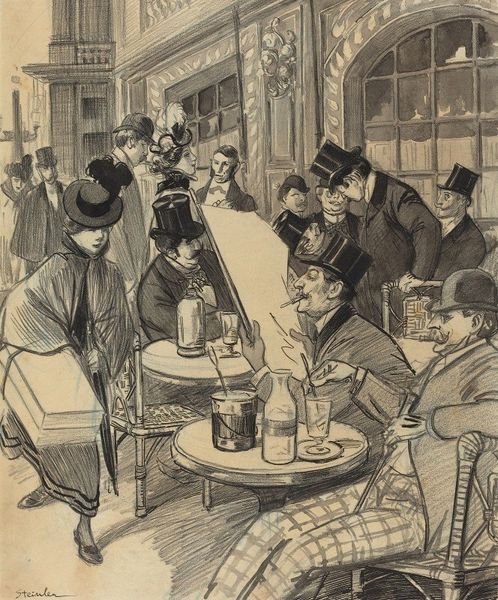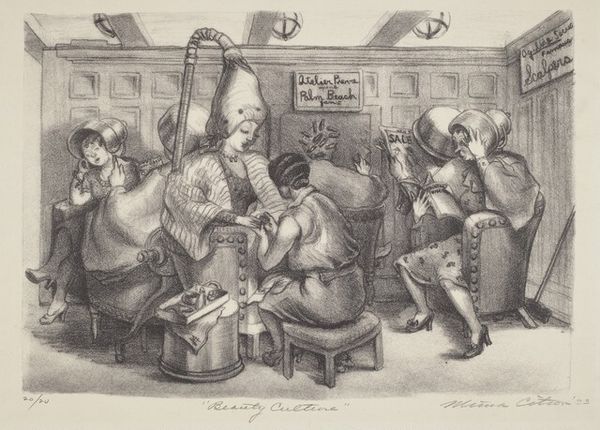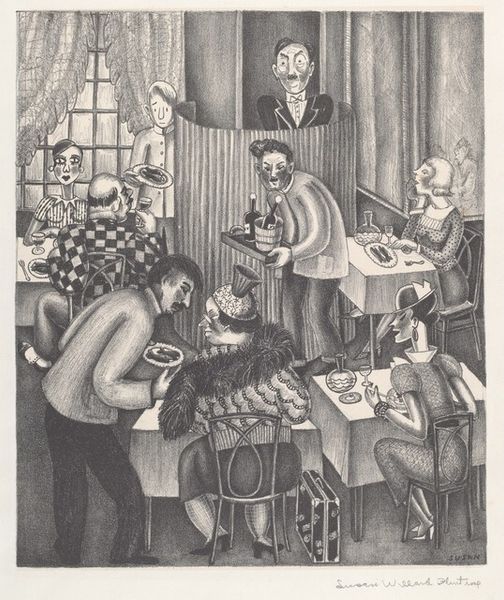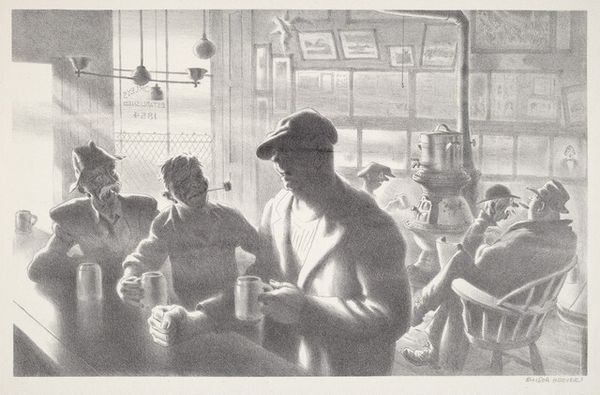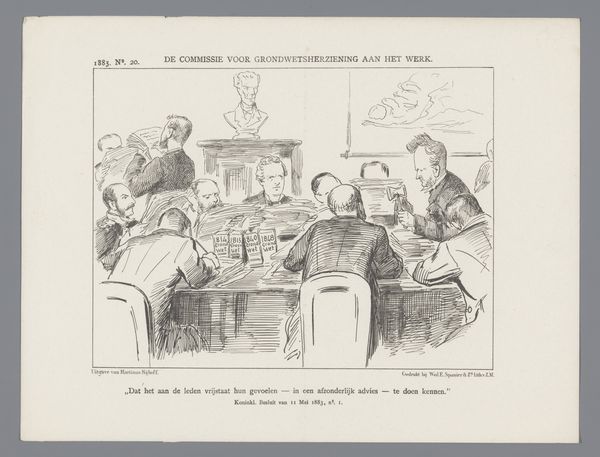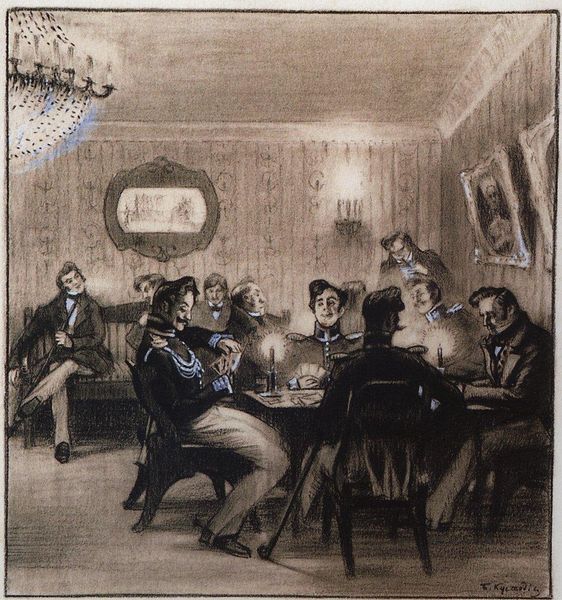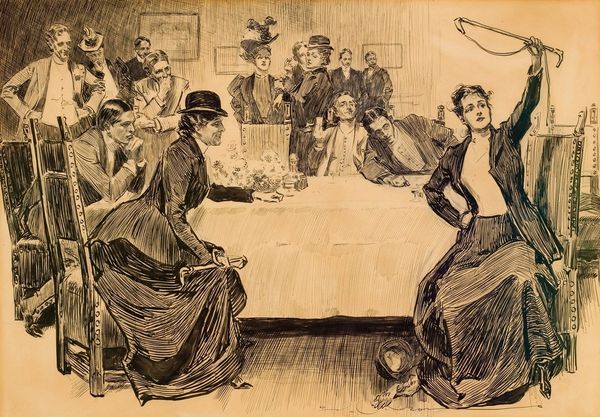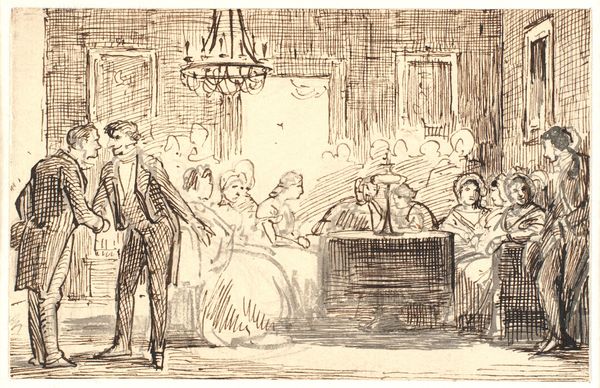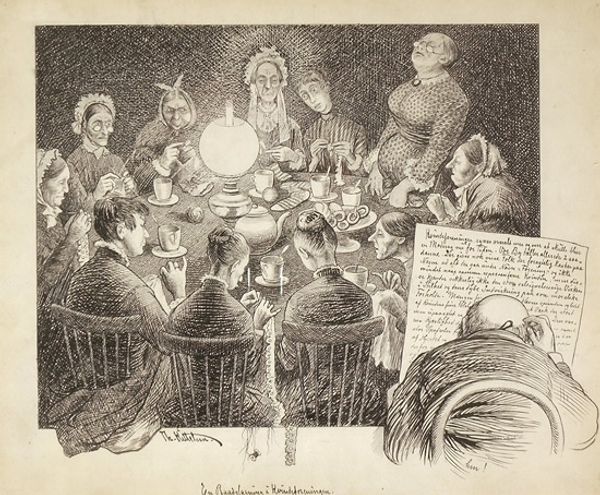
drawing, print, pencil
#
portrait
#
art-deco
#
drawing
# print
#
pen illustration
#
pen sketch
#
pencil sketch
#
pencil
#
cityscape
#
genre-painting
#
modernism
Dimensions: Image: 297 x 503 mm Sheet: 514 x 656 mm
Copyright: National Gallery of Art: CC0 1.0
Curator: What strikes me immediately about Joseph Webster Golinkin's "Speako Deluxe" from around 1928, created using pencil and print, is its stark atmosphere, despite the implied conviviality. Editor: Indeed, the contrast is quite potent. The monochromatic palette and the precision of the linework lends an almost architectural quality, containing the revelry as if diagramming the performance of leisure. But consider: what is "deluxe" about it, and for whom? Curator: I see your point. The figures are stylized, elongated, almost flattened into the scene, a hallmark of Art Deco. It gives the impression of a meticulously staged tableau vivant, and that artifice underscores your questioning. Editor: Precisely. It’s the Roaring Twenties viewed through a scrim of anxiety. Prohibition, wealth inequality…the party is for some, enabled by others. This isn’t a candid snapshot but a curated performance of affluence in a period riddled with social tension. Curator: The composition draws your eye into the room via that winding bar. The artist uses a convergence of lines to pull you in, engaging you to observe these discrete figures in their various couplings and poses. The formal components contribute to the artwork's depth. Editor: And within that carefully constructed depth, note who occupies center stage—the serving staff and bartenders—the infrastructure upon which this excess depends. The elite mingle behind them in shadow. To view it merely as an illustration of Jazz Age exuberance is to miss the social commentary woven into its structure. Curator: The artist undeniably uses those perspectival lines to focus attention, the vanishing point serving as more than just compositional architecture, I'll grant you that. It makes for a dynamic piece, charged with that inherent tension. Editor: It's a fascinating study, not only of form but of the narratives that underpin the gilded age in art and society, so effectively realized in Golinkin's piece here. I think we would benefit from analyzing more of this period using intersectional and historical understanding to expand our views of American life and Modern art.
Comments
No comments
Be the first to comment and join the conversation on the ultimate creative platform.

